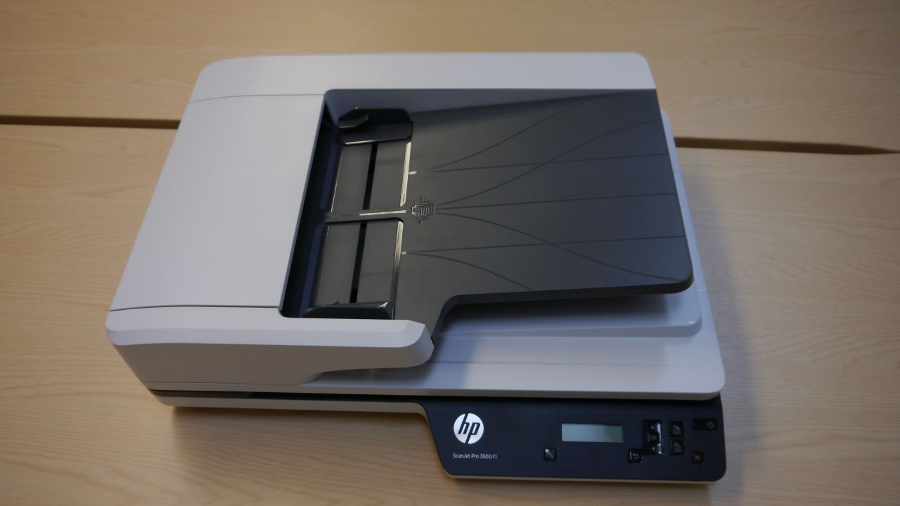Early Verdict
This is a solid enough product but a niche one, and many folks will have better options – there are also niggles with the paper handling.
Pros
- +
One of the cheapest flatbeds out there
- +
Impressive scan speeds
- +
Has an automatic document feeder
Cons
- -
It's a hefty device
- -
Paper handling issues
- -
There are simply better options for many
Why you can trust TechRadar
Selling standalone scanners in this day and age is becoming increasingly challenging. Blame it on the rise of digital processes – which bypass any physical medium (paper and ink) – or the advent of cheaper, more affordable, and dare we say, better value-for-money all in one printing/scanning solutions.
The HP ScanJet Pro 3500 f1, which targets the one-person office or small businesses, sits between the 2500 f1 and the 4500 fn1 which is the company's top of the range standalone document scanner. It's pitched at around the £300 (around $425, or AU$565) mark and the price difference between the ScanJet Pro 3500 and its cheaper sibling is about £60 – that jumps to a roughly £240 difference between the 3500 and the 4500.
The first thing you notice about the scanner is how massive it is. The ScanJet Pro is almost 150mm high and much larger than an A3 sheet making it far too big for an average desk.
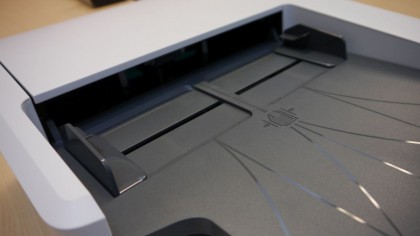
There's a large automatic document feeder (ADF) at the top which can hold 50 A4 pages, while at the back is a USB 3.0 type-b connector, and a tiny two line, 30-character LCD sits on the front with an array of buttons (Simplex/Duplex, Power, Cancel, Back and Tools/Maintenance).
A flatbed scanner can be found under the ADF cover – it has a 1200 dpi resolution, twice that of the single-pass ADF.
The 3500 has a recommended daily duty cycle of up to 3,000 pages or 1,500 double-sided sheets and is rated at 25 pages per minute for one-sided scanning and 50 ipm (images per minute). As always, your mileage will vary depending on your connection and what applications you are using.
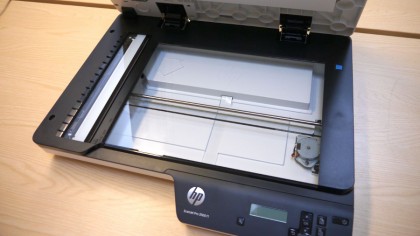
Speaking of software, other than the scanner device drivers, the 3500 comes with IRIS Readiris Pro 14, Nuance PaperPort 14.5 and IRIS Cardiris 5.5.
However, you don't need any of them to get the scanner running as it is a true plug-and-play device, at least on Windows 7 Pro. We used the operating system's own fax/scanning application and the popular Irfanview image editing and management freeware for this hands-on.
Using the latter, it scanned 41 pages to JPG files in 105 seconds, dropping down to 101 seconds for 82 pages in Microsoft Fax and Scan application, which shows that there's no marked difference between single-sided and double-sided speeds.
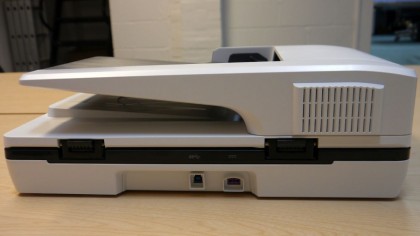
Different applications however may impact your scanning speeds. So choose wisely especially if you have to scan hundreds of sheets.
All speed tests were done in default modes (colour and 300 dpi) and the test sheets were a mix of double-sided and single-sided stock A4 sheets featuring text, graphics and tables, but no large pictures.
We did encounter some issues with paper handling, something that HP's EveryPage feature was supposed to eradicate by using ultrasonic multi-feed detection. Because the ADF used is not a straight-sheet feeder, you will not be able to batch scan business cards or thick media.
The ADF would just stop working in the middle of a batch scan, before actually loading a sheet which excludes any paper jamming issues. Fanning the sheets, putting them back in place and pressing the OK button didn't solve the problem. Only a hard reset brought back the scanner.
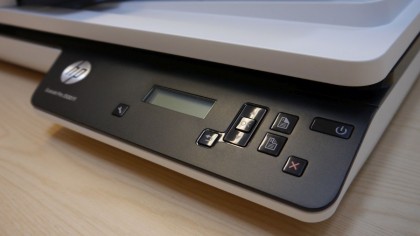
Early verdict
At just over £300 from Ebuyer (around $425, or AU$565), the HP ScanJet Pro 3500 f1 is one of the cheapest flatbed scanners on the market, but unless faster scanning is an indispensable requirement, as is a daily duty cycle higher than 1,500 pages, I would recommend sticking to the more affordable 2500 f1.
Then again, there are other options. If pure batch scanning is what you're after, a traditional document scanner is probably what will work best.
Most will easily sit on an A4 sheet, will be able to scan much thicker paper sheets (as well as banner-like media), be less prone to paper jams, scan without a computer and scan directly to storage media (USB sticks or memory cards), network/cloud services (Dropbox, OneDrive, SharePoint) or even send or share files via email.
Beyond this though, the real question would be whether you still need a flatbed scanner – you could look at something like the HP LaserJet Pro M426fdw multifunction printer for example. It probably has a smaller footprint than the 3500 f1 (although it is definitely taller).
Other than printing and faxing, it has two USB ports, Wi-Fi, a large touchscreen display, a Gigabit LAN port, a slew of business apps and costs less than the 3500 f1 (at the time of writing, £244 with a free five-year warranty thrown in). The downside, other than size, is the fact that it is marginally slower than the flatbed scanner but otherwise, it is a far more versatile device altogether.
So to recap, flatbed scanners are now ultra-niche products. HP's 3500 f1 will be useful to someone who absolutely needs a standalone, non-networkable, flatbed scanner with ADF functionality – one that remains attached to a computer. For the rest of us, better options are available.

Désiré has been musing and writing about technology during a career spanning four decades. He dabbled in website builders and web hosting when DHTML and frames were in vogue and started narrating about the impact of technology on society just before the start of the Y2K hysteria at the turn of the last millennium.
What is a hands on review?
Hands on reviews' are a journalist's first impressions of a piece of kit based on spending some time with it. It may be just a few moments, or a few hours. The important thing is we have been able to play with it ourselves and can give you some sense of what it's like to use, even if it's only an embryonic view. For more information, see TechRadar's Reviews Guarantee.
